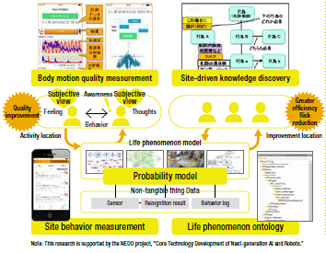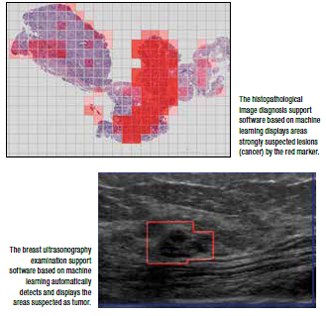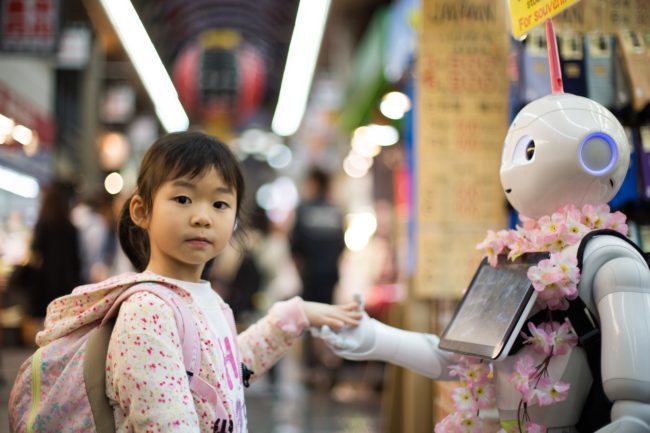 The Japanese vision of Society 5.0 promotes the Super Smart Society, in which Information Technology and Artificial Intelligence will change a plethora of things. Much that is now performed by humans will then be carried out by computers. Sweeping changes in business and production will make jobs obsolete and create new ones at the same time.
The Japanese vision of Society 5.0 promotes the Super Smart Society, in which Information Technology and Artificial Intelligence will change a plethora of things. Much that is now performed by humans will then be carried out by computers. Sweeping changes in business and production will make jobs obsolete and create new ones at the same time.
Society 5.0 will change all sectors of the economy
In my last editorial I described that the well-known German Industry 4.0 initiative mainly looks at improvements in the production area through IT. Yet the German government’s High-Tech Strategy also covers areas like business, healthcare, mobility and innovation. As such, the Japanese term Society 5.0 much better describes that the coming changes are expected in all areas of our work and life.
Constantly increasing computing power – still doubling every two years – is enabling IT systems with new capabilities. They can draw conclusions and make sense of the huge amount of data that we already have and continue to create. New data is produced in an ever-increasing pace through sensors deployed in more and more products and devices, social data collected by governments, companies and so forth.

Improving quality of on-site services and supporting creation of new services (visual curtesy of AIST)
This huge amount of data, so called Big Data, is too large for humans to make any sense out of it. But computers can screen data faster and in larger amounts. Deep Learning – a machine learning technique – enables them to extract patterns and draw conclusions. Today’s systems are already powerful enough to build useful AIs capable of conducting tasks that in the past needed human understanding, knowledge or decision making.
We can now combine the Cyber Space (the information) with the Physical Space (the “real world”) to create Cyber Physical Systems (CPS). Objects of the real world are enhanced and combined with information. This makes their production easier and more automatable. It improves their usability or productivity and creates new customer benefits. Services will be changed as more information becomes available and new conclusions are drawn by AI systems. We will see new ways of services and new tools that were not imaginable before.
Systems we already experience in everyday life
Most of us use smartphones today. Their computing power now allows built-in assistants like Apple’s Siri to help us. Who hasn’t experienced during the past few years that these AIs are getting smarter and provide increasingly better answers to our questions? Their capability and intelligence will increase further until they will be as capable as a human assistant.
Nowadays, navigation systems can be found not only in cars but also on smartphones. They are also becoming a better help and can find locations even in foreign countries when the input is not even in the local language. I have been astonished sometimes that people visiting me in Japan found their way easily using their smartphones.
The internet offers social media spaces in which already now machines are handling conversations. So-called Chatbots reply like human beings and may soon be so good that they cannot be distinguished from real persons any more.
Anyone who has ever used online translation systems will agree that the progress in information technology can be felt in this area. While machine translations were pretty bad just a short time ago, they have become quite good within the last one or two years and by now deliver at least results that make a text understood.
Changes in work life
Jobs will change in many fields, too. AI will be able to handle many administrative routine jobs. As we wrote earlier, one year ago a Japanese insurance announced to replace 30 people by IBM’s Watson to issue insurance policies.
Computers also excel in areas that many people do not so easily expect. Medical doctors will soon get help from AI systems, and part of their work might even be substituted in the future. AI systems can analyze much bigger amounts of data than humans and do so in much shorter time. They can screen more X-ray pictures than any human doctor has ever seen and discover patterns that are not obvious for the human eye.

Computer-aided diagnosis in medical imaging based on machine learning (visual curtesy of AIST)
In research institutes much of this future is already reality. At the Artificial Intelligence Research Centre of the National Institute of Advanced Industrial Science and Technology (AIST), scientists are looking into new systems that detect cells that are suspicious of being cancer cells. Using machine learning and better image recognition technologies, they can find patterns by comparing healthy and unhealthy cells.
In another project, breast ultrasonography pictures are analyzed concerning anomalies that can help doctors to easier detect possible medical problems. Other research institutes are working on other medical areas in their laboratories. Some of these findings might well be applied for human treatment soon.
Similar support work through AI systems will come in all areas where people are doing work that processes information, builds on experience learned and draws conclusions based on this knowledge.
Besides medicine and administrative work, AI systems are even used in research. Toyota recently announced to use them to develop materials for batteries and fuel cells.
Autonomous driving
We all have seen movies featuring self-driving cars – and also may have heard about the first casualties. Such cars are equipped with sensor systems to see or detect the environment around them. The data collected by these systems then is interpreted by the built-in AI, which has to understand the images. If it recognizes pedestrians, for example, it has to predict their movements. Will they soon cross the street or not? Based on this information and conclusions, the system has to make decisions where to steer the car and whether to brake or to accelerate. The AI is literally in the driver’s seat.
Besides the personal comfort that autonomous driving will provide, it is also slated to strongly affect the profession of professional drivers of taxis, trucks and other transport systems. They might be obsolete in the future and I can imagine a time when people talk of the past when there were cars and other means of transportation driven by people.
Changes in industry
As already mentioned in this article, computer systems will take over more and more work. They will draw conclusions, build up experience and exchange themselves with other systems in real time. This doesn’t only apply to administrative work, which will dramatically change and much of it become obsolete, but also to production itself. In Japan, this is called monozukuri (making things), implying the long experience from craftsmen up to automated production processes.
Through automated machines and robots, machines can already do almost anything done by humans before. Although some parts might still be too expensive to automate, costs of machines are decreasing. Connecting more and more steps along the supply chain – from raw materials to the final product – through IT is makes automation even more cost effective. The factory without people will increasingly be a reality, although not tomorrow.
The future might see only some specialists supervising the production processes. The German Meister, an expert in making things, might not be seen walking through factories any more. Machines do not need to learn for years; just plug them in and they get underway. Machines will also be able to improve themselves.
Conclusions
As the Japanese term Society 5.0 implies, we will see changes in every aspect of our society. The future will need many IT specialists, who can still handle these systems and are used to work with big data. The new systems will substitute much of our current work. Yet they will also assist humans, as in the future still humans will interact with human clients and customers.
Japan was always a technology driven and open country. Many developments will be seen here early, but the future systems will and have to be connected internationally. This presents a good opportunity for international cooperation, such as Japan and Germany proclaimed at the CEBIT fair in Hannover 2017.
Top visual: Photo by Andy Kelly on Unsplash



Thanks for the inspirational article